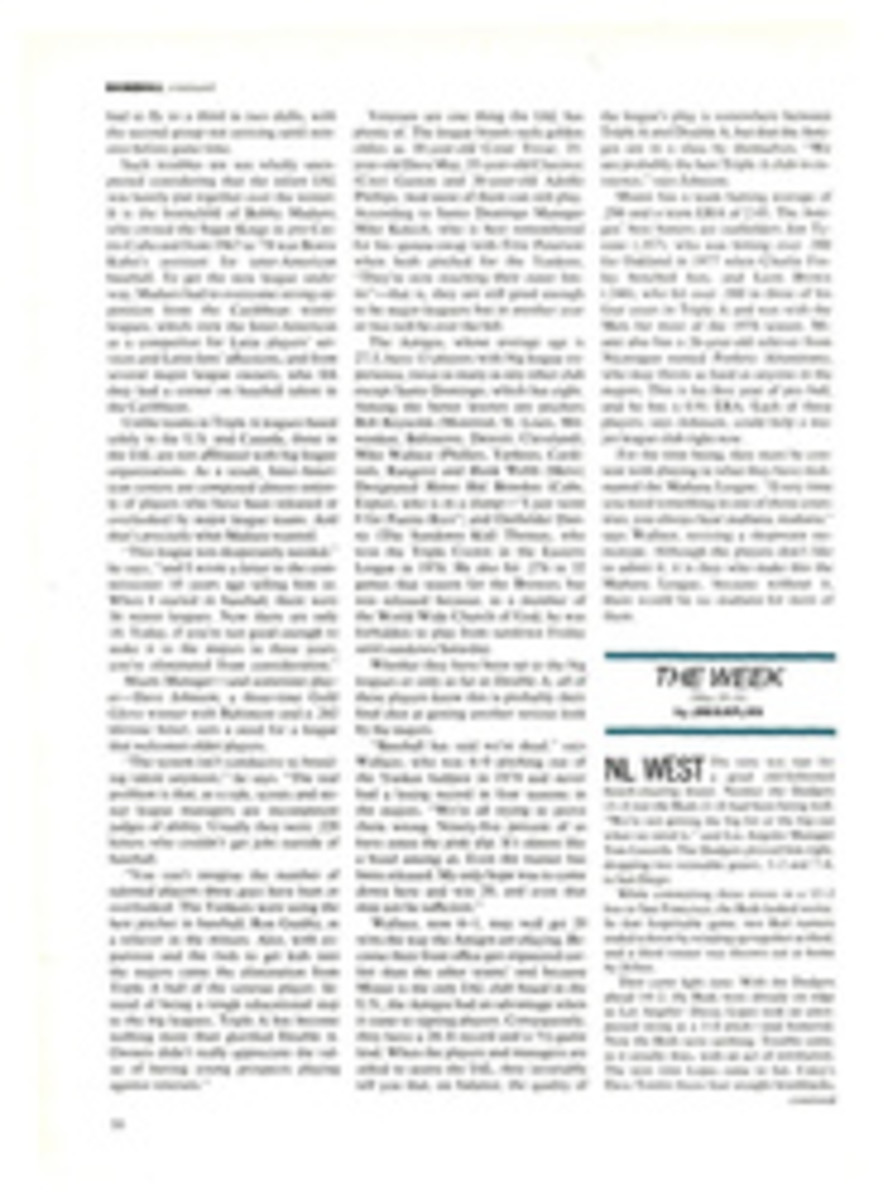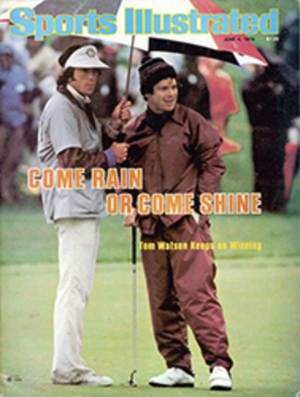
World Cup: once more, with feeling
By some means or other, maybe 3,000 of them managed to get to Switzerland—fiercely mustachioed men with long dark hair who swayed in rhythm, lofting their sky-blue-and-white banners. "íVamos, Argentina!" they chanted, emotionally so high that it made no difference at all that the game in progress before them at the Wankdorf Stadium in Berne was between the Icelandic and Swiss national sides. But soon the curtain-raiser would be over. And then their beloved campeones, Argentina's soccer team, champions of the world, would materialize. They waited in ecstasy.
Last week's rematch of the 1978 World Cup finalists, Holland and Argentina, a so-called "friendly game," was in celebration of the 75th anniversary of FIFA, the Fèdèration Internationale de Football Association, the body that administers soccer in 146 countries from Afghanistan to Zambia and is the ultimate authority for the sport's 22.5 million players. An exhibition game, you might think, simply to grace the jubilee. It turned out that nothing could have been farther from the truth.
Rudy Krol, the hard man at the center of Holland's defense a year ago in Buenos Aires, said before last week's game that his team was "desperate to win." The sickening disappointment of twice being runner-up in the World Cup is still felt by the Dutch—the nation, as well as the team. Cesar Menotti, the Argentinian coach, was furious that FIFA insisted that his lineup be as close as possible to that which took the field in River Plate Stadium. He had young players, he claimed, who would now do his country more justice than some of the veterans of '78.
Astonishingly, one of the veterans who seemed to be in that category was Mario Kempes, who had scored what turned out to be the winning goal in the Cup final last June. He didn't appear in Switzerland, although he had been named as a member of the team. A "leg injury" was cited. His absence, however, made room for 18-year-old Diego Maradona. Diego who? It proved worthwhile to go to Switzerland and find out.
The strongly felt antagonism between the two teams promised drama aplenty, but in addition there was the case of Johan Neeskens, the Dutch midfielder who is considered the second-best player in the world to his compatriot, Johan Cruyff. Neeskens had gone with Cruyff to Barcelona to play under Coach Rinus Michels. Neeskens' contract with Barcelona terminates on June 30. Before the Berne game, Neeskens had agonized publicly over the choices that presented themselves to him. In money terms, the advantage undoubtedly lay in accepting a reported $300,000-a-year offer from the Cosmos. Sentiment, though, attracted him to the English club, Arsenal, which also is seeking his services. This might be hard to understand unless you are aware of the abiding mystique in Europe of the Arsenal name, which has its roots as far back as the 1930s when the London team carried everything before it in world soccer. There was also a chance that Strasbourg of the French League might sign Neeskens, or even that he would go back to Holland.
A man deeply concerned with all this is Ahmet Ertegun, the president of the Cosmos, who is fond of saying, "If I make $60 million selling records for Warner, why shouldn't I spend a few million on players?" At Gatwick airport outside London, waiting for his flight to Berne on the morning of the game, Ertegun caught a glimpse of a headline in the sports section of the London Daily Mail: ARSENAL'S BATTLE WITH DOLLAR, it read. "May I borrow your paper?" he inquired urgently of the man reading it. He read carefully through the piece, twice.
Neeskens himself, though, had other preoccupations the evening of the Argentina-Holland match. He had been given the task of marking young Maradona. That didn't seem to be too demanding a task. Neeskens is 27, a big bull of a man, fast and dominating in the middle of the field, and adept with a single pass, yet he is as redoubtable a defender as anyone in the world. And experienced: 46 appearances for Holland.
Maradona, too, proved physically solid when he ran on the field, taller than most of the Argentinians—much bigger, for instance, than Kempes. And as soon as the game started, he proved that despite his size he was faster on the break than the World Cup hero. He left Neeskens behind, cut spectacularly through the defense and chipped a ball to Forward Daniel Bertoni. The Dutch goalie, Wim Doesburg, just got down to stop the resulting ground shot. Seemingly within seconds, Ubaldo Fillol, the Argentinian goalkeeper, was beating out a fierce shot from Kees Kist. In the first 10 minutes of the game there could have been five goals.
The Argentinians had fielded nine of their 11 World Cup players, the Dutch only four. However much that might have disappointed the organizers, moments after the start of the game it had ceased to matter. It was the orange shirts against the blue-and-white again, with as much passion as there had been in the cauldron of River Plate Stadium last June. If this was a friendly game, the friendliness died out within minutes.
Early in the first half, Bertoni was taken out hard by Hub Stevens, a Dutch newcomer, and the violence then escalated through the match. At one point Neeskens was trading punches with Daniel Passarella. Yellow cards, rarely seen in friendly games, were shown to both. Then Dutch Defender Hugo Hovenkamp was writhing on the ground, and his teammate, Stevens, was angrily demonstrating to the referee how Bertoni had elbowed him in the ribs.
In spite of all this, the game flowed. In many ways it was a better match than the World Cup final, faster moving, more volatile. If no goals came, it was because marvelously creative attacks were blunted by two magnificent defenses. On balance, Argentina was somewhat faster on the breaks, more inventive in attack. And Maradona proved that his reputation was no mere hype. He could well dominate world soccer for the next 10 years.
As champion, Argentina is already assured of a place in the final competition. So is Spain as host nation. What came out of the business side of the FIFA Jubilee in Berne was that they will be joined in the finals by 22 other nations, not just 14 as before. This doesn't mean that the U.S. will have an easier time of making the finals. Only one extra place has been allocated to the countries in CONCACAF—which takes in the Caribbean, Central and North America. What having a 24-team final could mean, though, is that the chances of the World Cup being held in the U.S. in 1986 have markedly increased. It seems highly unlikely that Colombia, whose turn it is, could satisfactorily accommodate 24 national teams.
Meanwhile, as the celebratory game continued, it became clear that only a defensive lapse by either side could lead to a goal. No lapse came. Final score: a fitting 0-0, an honest tie—except FIFA somewhat unworthily decided to have a penalty-kick shootout. It ended 8-7, in Argentina's favor.
So that settled that. The only mystery left was what Neeskens' decision would be. He would make up his mind, he said, in two weeks. Interestingly, the next day Neeskens' longtime teammate, Cruyff, scored twice in the first seven minutes of his first game for his new club, the Los Angeles Aztecs—which he had joined against all expectation that he would line up with the Cosmos, who received a reported $600,000 from L.A. for relinquishing their contractual rights to the Dutch superstar. So the titillating prospect emerges that on Aug. 1 the two great Dutch players will be on opposite sides for the first time in their pro careers, when the Aztecs meet the Cosmos. Meanwhile, Neeskens may well reflect that going to the Meadowlands will at least put some extra distance between himself and Diego Maradona.

